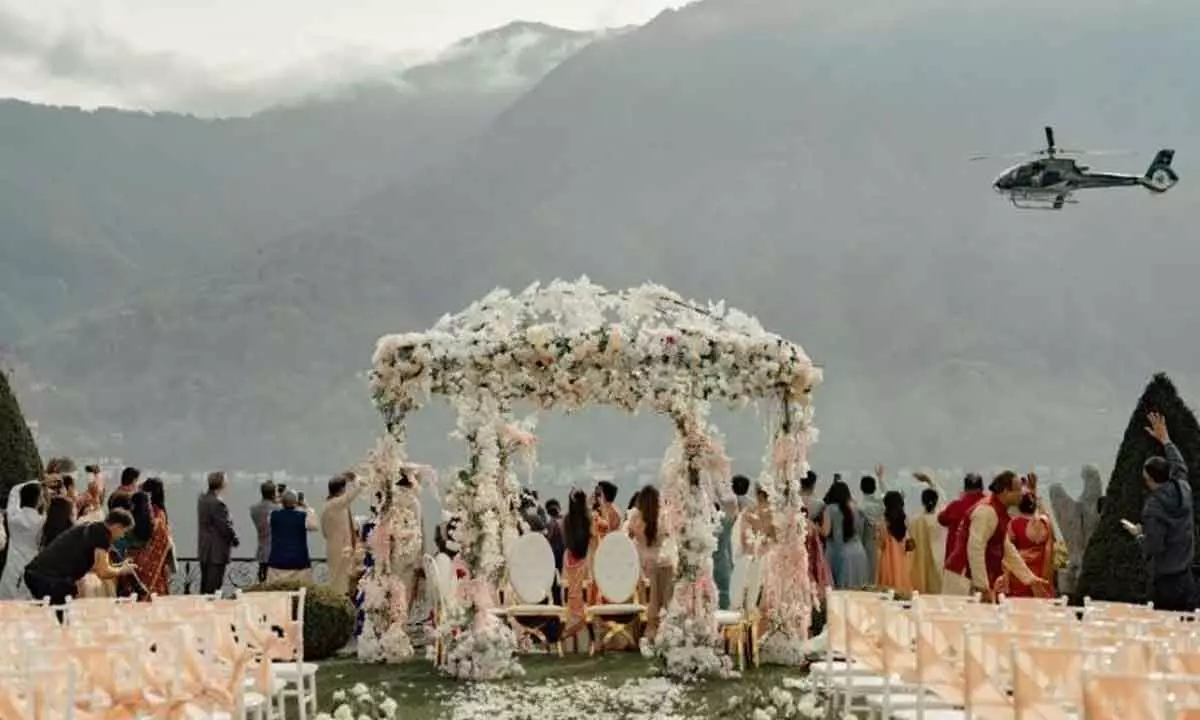The big fat Indian wedding industry is valued at Rs 4.5 trillion annually
The estimates vary as the industry comes under a highly unorganized sector
image for illustrative purpose

We’re seeing the average size of weddings has come down but the budgets are staying the same. We say the big fat Indian wedding is still here, but it’s fat in different ways now. People are spending the same amount but in smaller, more experiential ways, elevating that guest experience with more personalization and customization
The Big Fat Indian wedding is legendary. A staggering one crore weddings take place in India every year and the wedding industry is growing at 25-30% annually. People across the world dream of attending one, and people in the country go to extreme ends to have one!
These grand celebrations are characterized by massive spends and also massive waste. Its complexity, diversity and scale make it a very interesting case study.
It is time to understand the workings, sociology, demography and economics of the wedding industry in India as compared to the rest of the world.
The factors contributing most significantly to this rise include a rising urbanisation rate and GDP. Both these factors have led to an increase in the aspirational middle class with a higher spending capacity. Add to this the rising number of weddings owing to a young population and the wedding industry has seen a spurt in the last decade.
It is looked upon as a Rs 4.5 trillion-dollar industry here. However, the estimates vary as it comes under a highly unorganized sector.
Furthermore, with the growing digital transformation, customers prefer digital invitation cards over traditional ones.
The Confederation of All India Traders (CAIT) estimates a business worth Rs 4.25 trillion in just 23 days of this year's wedding season.
With around 3.5 million weddings between November 23 and December 15, they resulted in purchases and services amounting to an estimated ₹4.25 trillion.
In the comparable period last year, a total of around 3.2 million weddings were held, resulting in a business of ₹3.75 trillion, as per a survey.
Among the total weddings, an estimated 50,000 come under the luxury category, with expenses of Rs one crore or more, according to CAIT national president B.C. Bhartia and secretary general Praveen Khandelwal. Another 50,000 come under the Rs 50 lakh per wedding category, whereas about six lakh weddings are estimated at Rs 25 lakh.
The bulk of the weddings, nearly 1.2 million, are estimated to incur expenses of around Rs 10 lakh, whereas, another one million weddings would incur expenses of about Rs six lakh each.
We’re seeing the average size of weddings has come down but the budgets are staying the same. We say the big fat Indian wedding is still here, but it’s fat in different ways now. People are spending the same amount but in smaller, more experiential ways, elevating that guest experience with more personalization and customization.
India has 25% of the world’s weddings. That means one out of four weddings on earth happens here. That is just to give you a sense of scale. China and India represent half of the world’s weddings. The average guest count used to be 350-400 before Covid. But right now, it’s around 250 or so. But budgets are still healthy right now because even though guest lists have shrunk, people are choosing from more options on where they want to go to do their weddings and many of them are picking resort or destination weddings where they can spend the same or similar amount of money on fewer guests.
In India, the wedding industry works on black money. Inflation has absolutely impacted the industry. The supplier costs, food and the manufacturing supply chain; everything has been impacted and costs are on the rise and it would be difficult to calculate it to any approximate levels. In India, the vendors are reporting something like a 20% increase in their revenue, year-over-year in 2022.
Hotel and venue costs are up because there has also been a supply constraint. With pent-up demand, globally as well, there were lots of Monday weddings and Thursday weddings, because the supply couldn’t absorb all the extra demand.
Globally people want to spend money on weddings. Generally speaking, this industry follows the travel and hospitality industry, which has seen all-time high rates. In the wedding industry too, things have become more expensive, but people are willing to spend money on these types of experiences.

